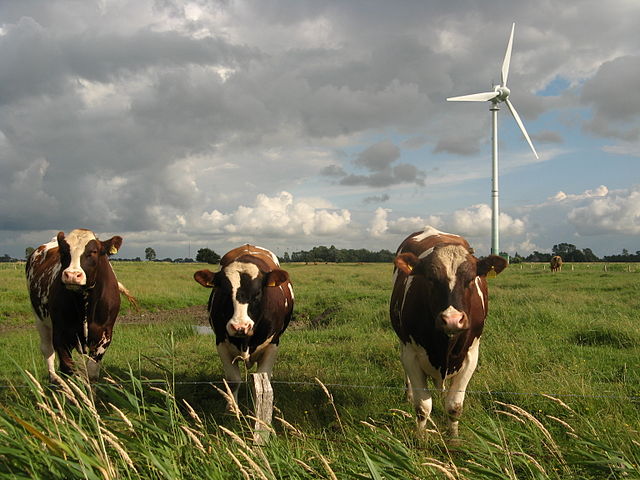Environmental impact of electricity generation
Electric power systems consist of generation plants of different energy sources, transmission networks, and distribution lines. Each of these components can have environmental impacts at multiple stages of their development and use including in their construction, during the generation of electricity, and in their decommissioning and disposal. These impacts can be split into operational impacts and construction impacts. All forms of electricity generation have some form of environmental impact, but coal-fired power is the dirtiest. This page is organized by energy source and includes impacts such as water usage, emissions, local pollution, and wildlife displacement.
Coal power is being phased out because of its pollution - such as Navajo Generating Station
Nuclear power activities involving the environment; mining, enrichment, generation and geological disposal.
Livestock grazing near a wind turbine.
Part of the Senftenberg Solarpark, a solar photovoltaic power plant located on former open-pit mining areas close to the city of Senftenberg, in Eastern Germany. The 78 MW Phase 1 of the plant was completed within three months.
A water footprint shows the extent of water use in relation to consumption by people. The water footprint of an individual, community, or business is defined as the total volume of fresh water used to produce the goods and services consumed by the individual or community or produced by the business. Water use is measured in water volume consumed (evaporated) and/or polluted per unit of time. A water footprint can be calculated for any well-defined group of consumers or producers, for a single process or for any product or service.
Global view of national per capita water footprints
Global average numbers and composition of all national water footprints, internal and external






